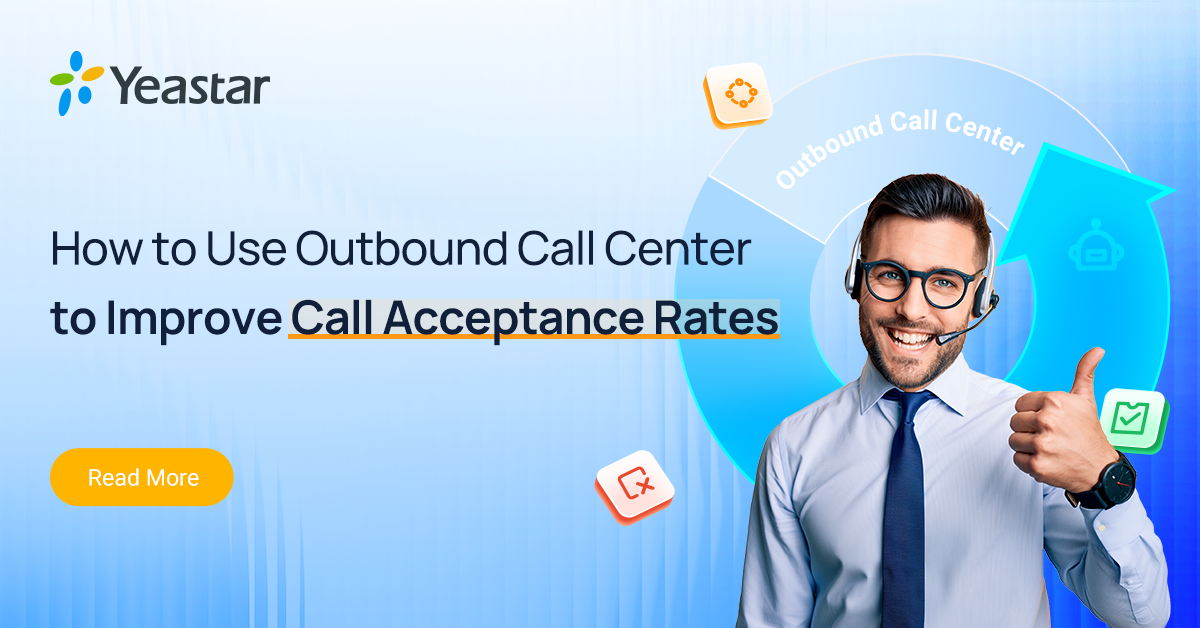From “Harassment” to “Precise Reach”: How to Use Outbound Call Center to Improve Call Acceptance Rates
6.2 min read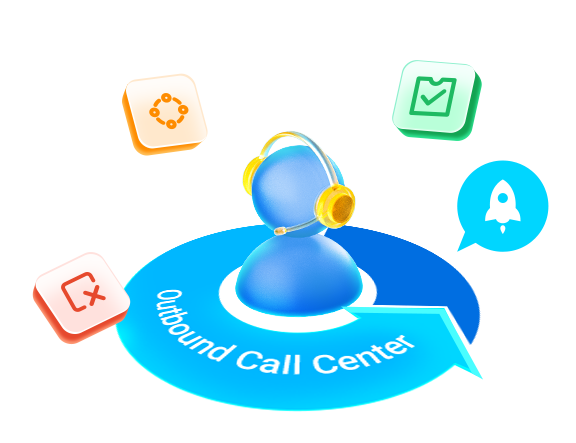
The moment an unfamiliar number flashes on their screen, most people’s faces twist in frustration. Some slam the phone down mid-ring. Others instantly block the number—no questions asked.
The stats don’t lie:
66% of customers enter calls already agitated (Mattersight).
Reddit threads overflow with call center agents publicly quitting after relentless, soul-crushing call volumes.
The term “cold call” now triggers the same visceral reaction as “telemarketer.”
Yet here’s the irony:
Calls still drive 54% of B2B conversions (Forrester). That disconnect reveals an uncomfortable truth: the problem isn’t outbound calling—it’s how most companies do it. Or, as one industry vet bluntly put it:” Outbound calling isn’t dead. You’re just bad at it.”
So how do we turn cold calls into warm conversations? It starts with fixing what’s broken.
Table of Contents
- Why Do Calls Get Such a Bad Rap?
- Outbound Call Center Solutions Minimize Customer Disruption.
- How to Create High-Impact Outbound Campaigns with Yeastar Call Center Solution.
Why Do Calls Get Such a Bad Rap?
The Timing & Relevance Trap
Imagine this:
- Scenario A: It’s Friday night. Your best friend calls: “Pizza and Mario Kart at my place—now.” You’re out the door before they hang up
- Scenario B: The same Friday. An unknown number chirps, “Interested in a mobile data upgrade?” You block them before the sentence ends.
The difference? One call solves an immediate need. The other is a shot in the dark.
Data backs this up:
- 78% of rejected calls happen because the topic is irrelevant to the recipient’s current priorities (Salesforce, 2023).
- Yet 89% of people answer calls they expect (e.g., delivery updates, doctor’s appointments).
The reality? People don’t hate calls—they hate being interrupted for no reason.
The Agent Motivation Crisis
Talk to any call center rep, and you’ll hear the same frustrations:
“I make 100 calls a day. 90 hang up before I finish my sentence. My manager’s only feedback? ‘Dial harder tomorrow.’”
“I don’t feel like a salesperson—I feel like a professional nuisance.”
But do agents actually hate calling?
Not when it works:
Agents with ≥30% connection rates have 3x higher job retention (Gallup).
When calls convert, 68% of reps actually enjoy the job (LinkedIn Sales Insights).
The real issue? They despise wasting energy on futile, scripted spam.
And that creates a vicious cycle: Rejection → Demotivation → More rejection.
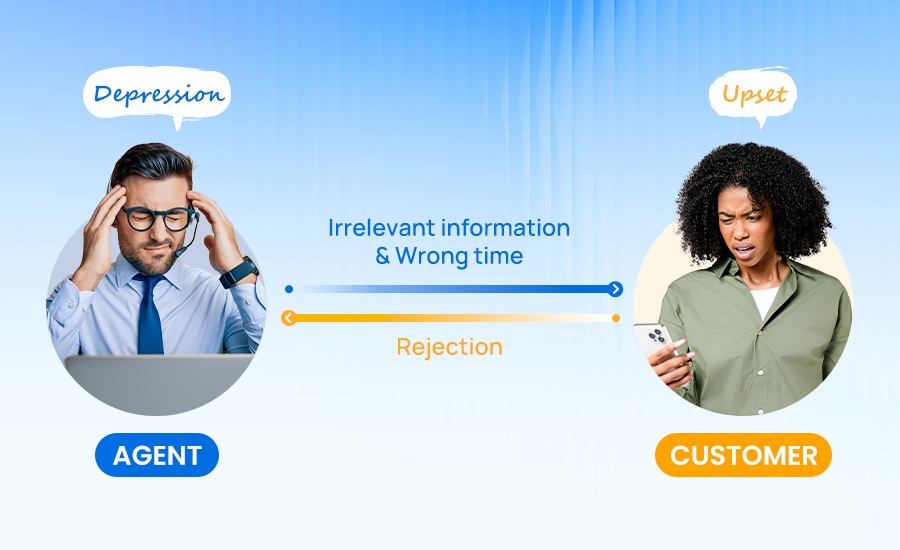
Is there a tool that can help us make calls at the optimal time and reduce unconnected calls for agents? How to be good at out calling? Modern businesses must now master two critical competencies: deploying an outbound call center solution & mastering the calling strategies.
Outbound Call Center Solutions Minimize Customer Disruption
The harsh reality of traditional outbound calling: manual dialing delivers dismal 1-3% conversion rates (Salesforce 2023). But here’s the game-changer: modern call center solutions can triple those results to 8-12% while slashing operational costs by 40%. Here’s how outbound call center solutions dramatically improve call acceptance rates.
Laser-Focused Targeting
Calls are triggered based on scenarios’ requirements, leveraging both agent-based and agentless dialing modes to maximize call effectiveness. ensuring higher connection rates, improved customer engagement, and optimized agent productivity.
Perfect Timing, Every Time
Time-Zone Optimization: Automatically adjusts for geographic differences.
Custom Business Hours: Schedule calls only during approved times.
Context-Rich Conversations
Integrated wallboards displaying complete caller profiles, empowering agents to deliver personalized, context-aware support in seconds.
Performance-Data Analytics
Call Performance Analytics: Leveraging call duration, abandon rates and more related records to refine dialing strategies.
But how do these powerful capabilities translate into real-world solutions? Here’s exactly how Yeastar Outbound Call Center Solution works.
Yeastar Outbound Call Center Solution for Calling Interaction
- Supports various outbound auto dialer modes, including Progressive dialer, Power dialer, and Agentless dialer. Minimizing agents’ ineffective dialing, maximizing time for meaningful interactions.
- Supports dialing customers at customized business times. Minimizing disturbances to customers during their unacceptable times.
- Supports Agent Call Inbox to check information and facilitate deep communication.
- Integrated with Campaign Wallboard to support data visualization,allowing real-time viewing and management. You can also view metrics like campaign abandon rate, connection rate, and callback statistics to adjust corresponding campaign strategies.
- Basic automation support, including Self-Service IVR, call recording, and the export of campaign call logs.
-
-
While an advanced outbound calling solution lays the foundation for efficiency, it’s only half the equation. The real magic happens when you combine the solutions with a well-crafted calling strategy – that’s where acceptance rates truly soar. Let’s explore how to configure proper strategies within Yeastar’s Outbound Call Center to maximize your connection success.
How to Create High-Impact Outbound Campaigns with Yeastar Call Center Solution
Outbound calling isn’t just about dialing numbers—it’s about connecting with the right people, at the right time, with the right message. Yeastar’s Outbound Call Center solution transforms cold calls into meaningful conversations by optimizing every step of the campaign process. Here’s how to design a high-converting outbound campaign that maximizes pick-up rates, minimizes disruptions, and drives real business results.
Step 1: Define Your Campaign Destination (Who, Why & How)
Before launching, ask:
- Who are we calling? (Target contacts)
- Why are we calling? (Campaign objective)
- How will we engage them? (Message & strategy)
Pro Tip: Follow the golden sales rule—”Call the right person, at the right time, with the right message—or don’t call at all.”
Step 2: Set Up the Campaign Basics
We can configure these P-Series Phone System settings to maximize campaign effectiveness.
- Campaign Name – Clearly label for tracking (e.g., “Q3 Customer Retention Follow-Up”)
- Call Dispositions – Tag call outcomes (e.g., “Interested,” “Not Now,” “Wrong Number”)
- Dialing Hours – Optimize timing based on data, for example:
B2B: 10–11 AM & 2–4 PM (local time)
B2C: Evenings (6–8 PM) for working professionals
Why It Matters: Calling at the wrong time = instant rejection.
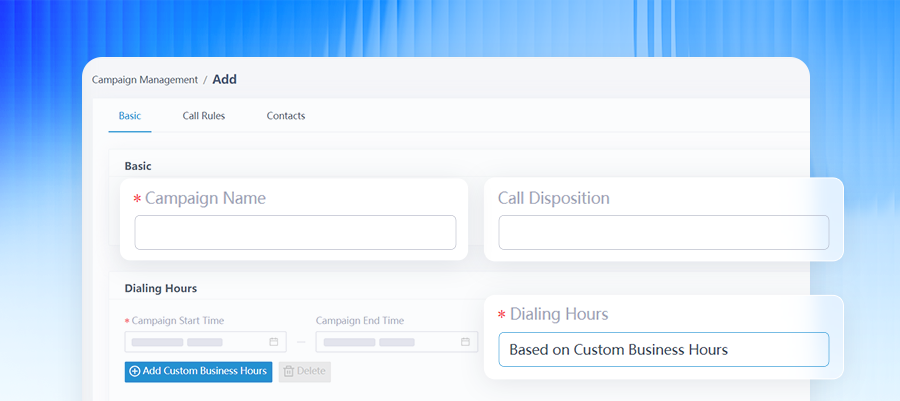

Step 3: Configure Smart Call Rules (Your “Conductor’s Score”)
Think of your campaign as a symphony orchestra—call rules are the conductor, ensuring perfect timing, pacing, and harmony.
Choose the Right Dialing Mode
Yeastar outbound call center offers 3 auto dialer modes for different kinds of customers.
- Progressive Dialer mode: the system waits for an agent to finish the current call before dialing the next number, and only dials one number per available agent. Recommended for scenarios where it is essential to ensure timely responses and follow-ups. For example, high-value customer sales, targeted customer callbacks, major client services, and technical support responses.
- Power Dialer mode: the system dials multiple numbers simultaneously based on a rate specified in the Dial Rate field, without waiting for an agent to finish the previous call. Typically utilized in scenarios that require rapid call placement and maximization of call efficiency, such as telemarketing, market surveys, and event promotions.
- Agentless Dialer mode: relies on IVR systems or voice prompts, and does not require direct agent involvement. It is commonly used for payment reminders, event notifications, surveys, and simple confirmations.
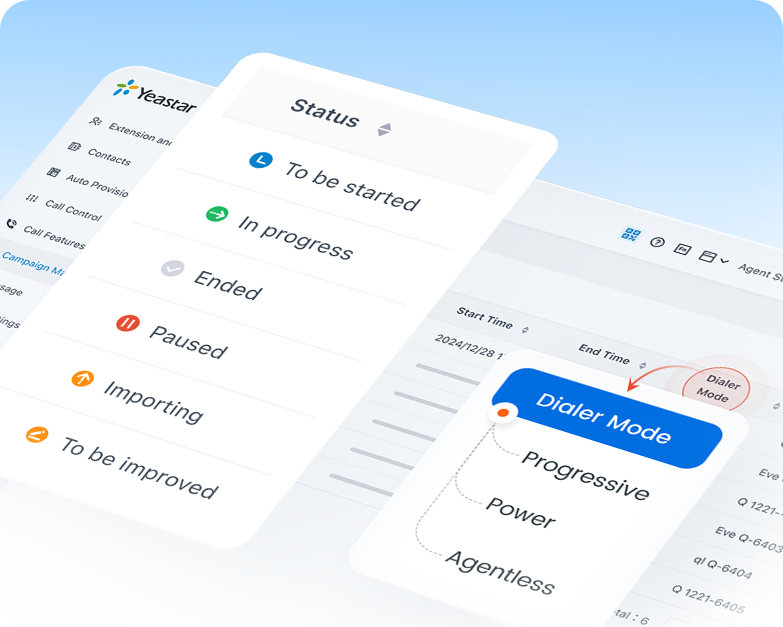

Route Calls to the Right Agents (Skill-Based Queues)
Not all agents handle all calls equally. Yeastar lets you:
- Match calls to reset custom queues (sales,support, VIPs and more).
- Prioritize VIP customers to your most experienced agents.
Fine-Tune Key Rules
P-Series Phone System’s fine-tuned call handling rules optimize connection rates while maintaining customer experience.
| Setting Items : | Best Practice: |
| Ring Timeout (seconds) | Recommended 20-30 seconds. |
| Max Attempts | Best Practice at 2-3 attempts total. |
| Retry Interval (minutes) | Never retry the same number within short minutes. |
| Set DOD | Display local codes |
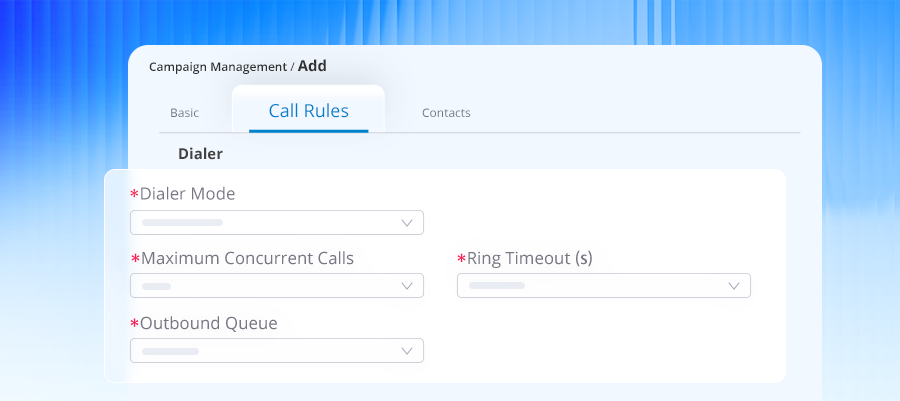

Step 4: Import & Segment Your Target Contacts
To maximize campaign effectiveness, prepare a targeted contact list with essential details (name, number, etc.) and associate it with your campaign through these 2 import options:
- Directly use the existing contacts stored in a PBX phonebook.
- Import a CSV file containing the contacts’ information.
Recommended option:
- Upload a refined list (e.g., past customers, leads from web forms).
- Enrich the contacts with data (company, names and more).
- Make groups strategically (e.g., “High-Value Clients,” “Trial Users”).
Pro Tip: the more relevant the list, the higher the conversion rate.
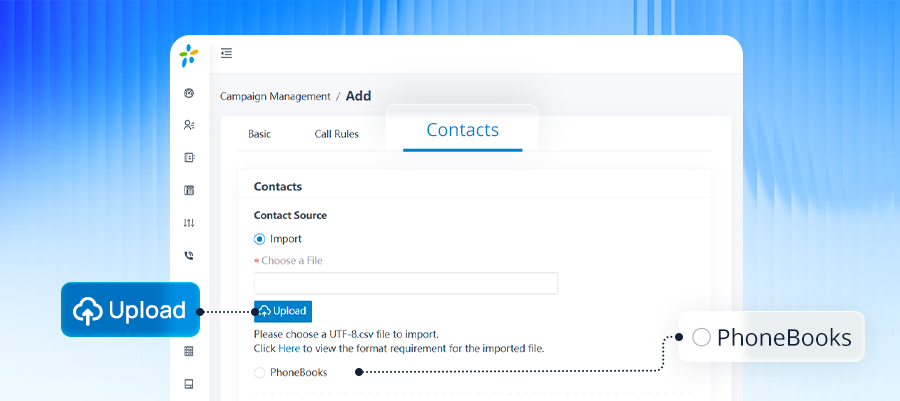

Step 5: Execute with Precision – The Art of Campaign Management
Launching your campaign is just the beginning. To achieve exceptional results, every detail—from agent preparation to post-call analysis—should be meticulously managed. Here’s how to perfect your execution:
Before Dialing: Prepare Your Agents for Success
A well-trained team is your campaign’s greatest asset. Ensure they master:
- The Golden 5-Second Rule – Hook attention immediately;
- Team Coordination – Smooth handoffs between departments (sales → support).
- Real-Time Note-Taking – Take call notes for follow-ups during the calls.
During Calls: Leverage PBX Agent Call Inbox
The Agent Call Inbox equips agents with critical customer information in a single view, including name, company and history notes, enabling informed and efficient call handling.
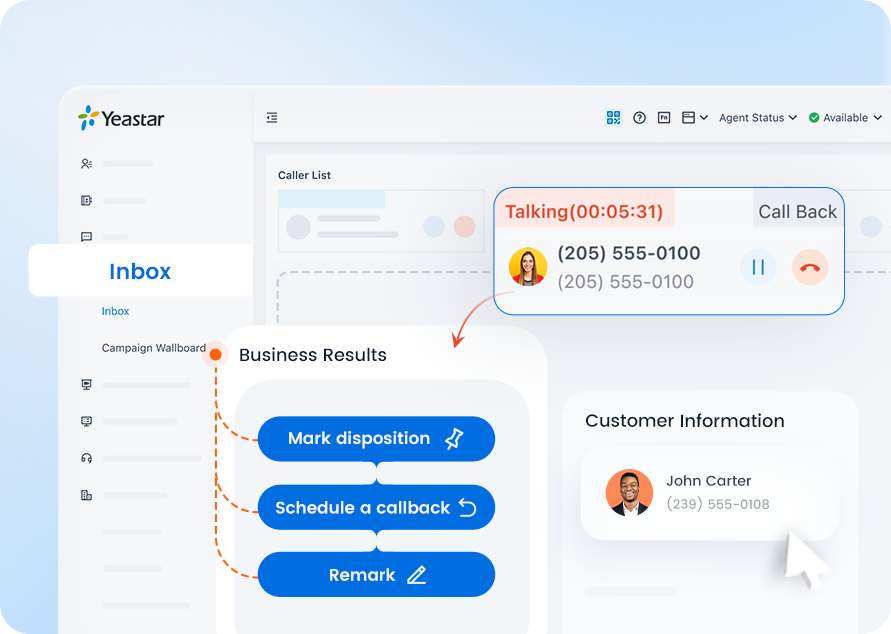

After Calls: Analyze and Optimize
The call ends, but your campaign improvement begins. The Campaign Wallboard transforms raw call data into actionable insights, enabling continuous campaign refinement.
Track the key performance data to deliver actionable insights.
- Connection Rate vs. Abandon Rate – Identify optimal calling windows.
- Call Log – Track every interaction by outcome.
Apply optimization cycles to continuously improve campaign performance.
- Review every report.
- Identify patterns (e.g., high abandons at 4 PM).
- Test adjustments (e.g., shift calls to 10 AM).
- Measure impact over 48 hours.
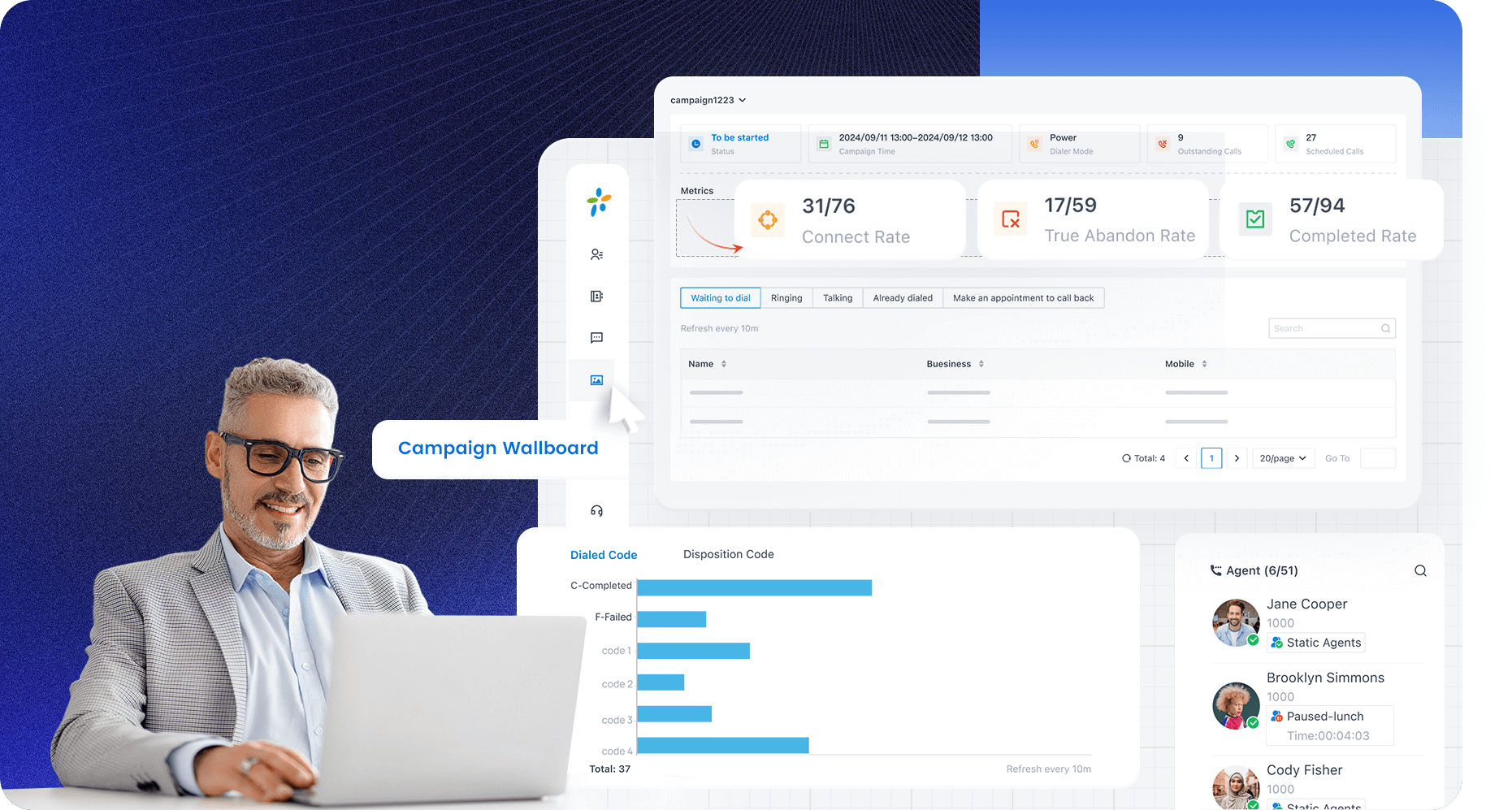

“A perfect campaign isn’t built overnight – it’s crafted through relentless attention to detail and data-driven tweaks.” Every step matters, from initial setup to ongoing refinement. Stay focused, analyze results, and continuously improve for maximum impact.
The Future of Outbound Calling is Here – Will You Adapt?
In today’s customer-centric world, success belongs to those who call smarter—not just harder. Why settle for generic promises when you can witness firsthand how Yeastar transforms outbound calling from guesswork to precision?
“After the demo, you’ll never look at outbound the same way again.”

